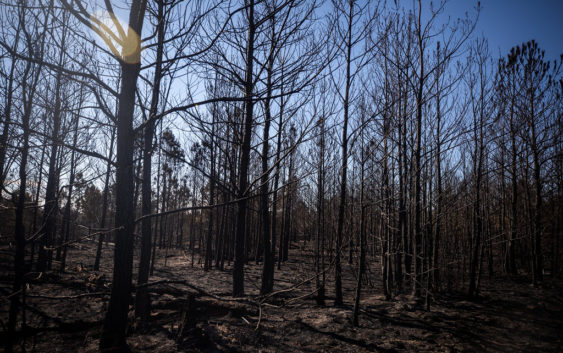- One year after devastating Panhandle wildfires, Canadian resident reflects on the work of rebuilding
- Hays County judge says software glitch caused some communication issues during wildfires
- FEMA deadline for Hurricane Helene recovery aid to governments, nonprofits extended
- Sellers and Rantanen are among the NHL trade deadline winners. Hurricanes and Boeser are some losers
- Hurricane forecasters express concern over NOAA job cuts impact
Wildfires ravage Central and West Texas as dry, windy conditions continue

An extremely large wildfire complex in Eastland County, east of Abilene, which has burned more than 54,000 acres, is nearly contained. But dozens of wildfires remain active in Texas. A 17,000-acre fire on the Fort Hood military post near Killeen grew quickly on Sunday, and that fire prompted some voluntary evacuations in rural towns in Coryell County. That fire was 0% contained as of Monday morning, according to the Texas A&M Forest Service.
John Nielsen-Gammon, Texas’ state climatologist and director of the Center for Climate Studies at Texas A&M University, tells Texas Standard that relief from rain or a reduction in windy or dry conditions is not expected for a few days. Listen to the interview above or read the transcript below.
This transcript has been edited lightly for clarity:
Texas Standard: How is wildfire season shaping up, relative to previous years? Is this one of the most active, or are we still getting started?
It’s been very active, early this season, and unfortunately, with the weather the next couple days, it’s on track to be certainly one of the worst seasons we’ve experienced in a long time.
Let’s talk about some of the climate factors contributing to these wildfire outbreaks. In part, we’re talking about the greening of Texas last year, with less dry air and more moisture than expected. That may be responsible for some of what we’re seeing now, right?
That’s right. Fire needs fuel, and that fuel is dry grasses and shrubbery. The grasses themselves are typically what allows fires to get started in the first time from a small spark. And last year, up through the middle of the summer, we had a relatively wet year. So there’s plenty of grass that grew last year. And then starting around September, the rain sort of shut off.
There’s many places in Texas have had less than half or even a quarter of their normal rainfall over the past six months. And so all of that grass, which was nice and green and lush is now just basically dry tinder, just waiting for a spark to set it off.
Last week we were talking about destructive tornado outbreaks. Is there a larger climate explanation for this swing, back and forth?
It does seem that rainfall on a seasonal basis is, at least, projected to become a bit more erratic. But rainfall in Texas is so erratic in the first place that you really can’t see any trend of that, historically, if you look over a long enough period of time. But one factor that contributes is the higher temperatures with climate change, [and] means that there’s greater evaporation, and so plants can lose their water more rapidly, the soil dries out more rapidly. And so we’re getting into these very dry situations. More often it doesn’t take as long a dry stretch in order to make things dangerous.
To what extent is lower humidity a factor?
It’s a tremendous factor, both for getting things dry in the first place and also the particular weather pattern that leads to wildfire outbreaks in general. Typically, even if you have dry grasses, if the humidity is high enough, they won’t burn very rapidly because they basically absorb the moisture from the air. So that’s why we, often times like last week, have the same storm system produce severe weather and produce wildfires, where the humidity is low [and] you can get wildfires forming with high winds.
But where the humidity is high, you’ve got instability, and you can get supercell thunderstorms forming, partly because of the high weather as well. So it’s sort of a double whammy there.
You mentioned climate change. Is there anything that homeowners in Texas need to consider when it comes to protecting their property?
Long-time residents in rural areas of Texas know the importance of having, effectively, a firebreak, allowing for tall grasses and shrubbery to grow all the way up to their house is potentially a recipe for disaster. And it’s great living in the Hill Country around Austin where we’ve got all this beautiful nature around. But Hill Country, with its juniper is also subject to a wildfire. And it’s wise to have a buffer zone between the house and anything in nature that can burn.
Are you seeing any light at the end of the tunnel as we begin a new week with these fire dangers?
We’ve got two or three days of problems in front of us, especially for hour people trying to fight fires. We’ve got today, strong winds across West Central Texas with low humidity. Then, tomorrow, behind the dry line, basically in the Panhandle and West Texas, we’re going to dry conditions and strong winds. And then when the cold front moves through on Wednesday or just ahead of it, we’re going to see dry conditions in South Texas with down slope.
About the only only good news, really, on the horizon is that after Wednesday, windsspeeds died down a bit and at least give firefighters a chance against whatever gets triggered over the next few days.